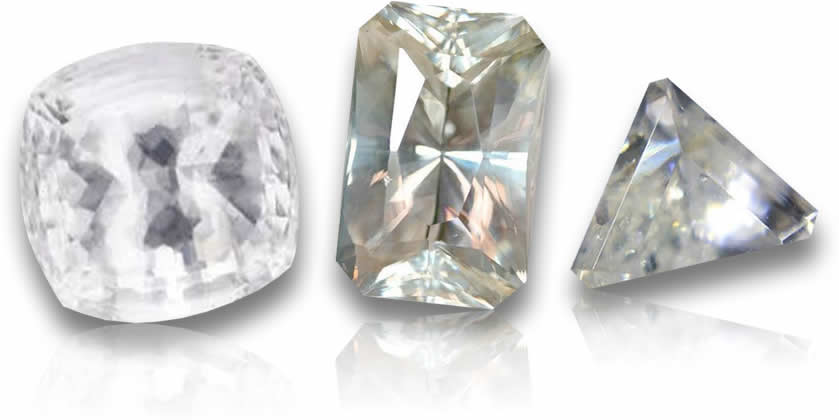What can I find in this article?
- Dolomite Gems, Revealing the Subtle Elegance
- Dolomite Color, a Subtle Palette
- Historical Significance
- Dolomite and its Spiritual Influence
- Metaphysical Properties of Dolomite
- Dolomite’s Healing Benefits
- Dolomite and its Connection to the Chakras
- Dolomite’s Versatile Applications
- Dolomite Care and Maintenance
- Mineral Composition of Dolomite
- Dolomite Properties
Dolomite Gemstone Information - A Detailed Guide with Images
Dolomite gemstone is a mineral prized for its unique combination of vibrant colors and intricate patterns, making it a sought-after choice for jewelry and decorative purposes.
Dolomite Gems, Revealing the Subtle Elegance

With their beauty and delicate hues, dolomite gems possess a unique charm that sets them apart in the world of gemstones. They are abundant yet rare, and these gems require exceptional skill to cut and lack the durability needed for traditional jewelry. However, their exclusivity makes them highly sought after by collectors and gemstone enthusiasts.
For these reasons, dolomite is a unique and exclusive gemstone. It’s collected by gem and mineral buffs and those interested in gemstone cutting. Dolomite gems offer a distinctive charm that collectors adore despite their limitations as a gemstone for jewelry. Thus most samples of this stone will be collected and displayed rather than worn.
In this article, we explore the captivating world of dolomite, shedding light on its characteristics, origins, and fascinating attributes that make it a gemstone of wonder.
Dolomite Color, a Subtle Palette
Dolomite gems exhibit a range of soft, pastel colors that evoke a sense of tranquility and serenity. From pale pinks and soft blues to creamy whites and light grays, dolomite showcases a palette of gentle hues. Often dolomite is translucent or transparent, and these rough stones make beautiful faceted wonders.
Additionally, dolomite comes in combination with numerous minerals that change the appearance of mineral specimens. Dolomite often forms with hematite, willemite, baryte, pyrite, quartz, and apatite. These mineral specimens are unique and attractive and therefore are sought after by anyone developing a robust, complete mineral collection.
Historical Significance Discovery and the Naming of Dolomite
Dolomite has a rich historical background and has been for centuries. The mineral dolomite was likely initially described by Carl Linnaeus in 1768, as stated by Nicolas-Théodore de Saussure. Named after the French geologist Déodat Gratet de Dolomieu, dolomite gained recognition in the late 18th century.
Dolomieu first identified dolomite in ancient Roman buildings and later discovered samples in the Tyrolean Alps. In March 1792, Nicolas-Théodore de Saussure formally named the mineral after Dolomieu, acknowledging his contributions to its study. It has been in architecture, construction, and as a decorative stone in various cultures throughout history.
Dolomite and its Spiritual Influence
Dolomite, a gemstone with profound spiritual properties, can open the heart and foster trust in oneself and the divine. It encourages inner certainty, self-confidence, and positive self-love. Dolomite also initiates healing and release from intense emotional blockages.
This stone invites individuals to trust the Goddess and embrace a deeper connection with the divine. Its calming vibrations enhance the meditation experience, providing a sense of tranquility and facilitating spiritual growth.
Dolomite encourages the exploration of new pathways of consciousness, whether through practices like tai chi, walking meditations in nature, or delving into lucid dreaming and shamanic journey work.
Metaphysical Properties of Dolomite
Dolomite is associated with grounding, calming, and balancing energies. It promotes a sense of tranquility and inner harmony, making it a popular choice for those seeking emotional and spiritual well-being. Dolomite enhances the connection between mind and body, supporting mental clarity and encouraging a centered state of being.
Dolomite’s Healing Benefits
In holistic healing, dolomite has several physical and emotional benefits. It alleviates symptoms related to the skeletal system, such as arthritis or osteoporosis. Dolomite is also associated with stress relief, calming anxiety, and promoting emotional stability.
Dolomite and its Connection to the Chakras
Dolomite, known for its gentle and soothing qualities, has an affinity for multiple chakras, including the Sacral, Heart, Crown, and Soul Star. When used in chakra work, dolomite can help balance and harmonize these energy centers, facilitating the free flow of energy throughout the body. It assists in grounding, opening the heart, expanding consciousness, and connecting with higher spiritual realms.
When incorporated into chakra healing practices, people can explore the subtle and profound influence on their energetic well-being. Its connection to the chakras enhances overall balance, vitality, and spiritual growth, offering a pathway to deeper understanding and harmony within oneself.
Dolomite’s Versatile Applications
While dolomite is not a common gemstone for faceted jewelry, it is perfect in cabochons, beads, carvings, and decorative objects. Its soft colors make it great for creating unique, elegant pieces that exude a sense of calm sophistication.
Some larger samples of dolomite are suitable for carving, so after an artist carves the piece, it will be presented as a work of art in a gemstone or mineral collection, away from dust and anything that might damage the piece of art.
Dolomite Care and Maintenance
Dolomite is a relatively soft gemstone, with a hardness ranging from 3.5 to 4 on the Mohs scale. As such, it requires gentle care to prevent scratching or damage. When cleaning dolomite jewelry, use mild soapy water and a soft cloth, and clean the stone gently. Avoid exposing dolomite to harsh chemicals or extreme temperatures to preserve its beauty and integrity.
Mineral Composition of Dolomite
Dolomite is a mineral that belongs to the carbonate group and is composed of calcium magnesium carbonate (CaMg(CO3)2). It often forms in sedimentary rocks and is found in massive or granular formations. Dolomite's crystalline structure can display rhombohedral or prismatic shapes, adding to its visual appeal.
Dolomite Properties
|
Category: |
Carbonate Mineral |
|
Color: |
White, grey to pink, reddish-white, brownish-white; colorless in transmitted light |
|
3.5 - 4.0 |
|
|
1.500-1.681 |
|
|
Luster: |
Vitreous, pearly |
|
2.84-2.86 |
|
|
Transparency: |
Transparent to translucent |

